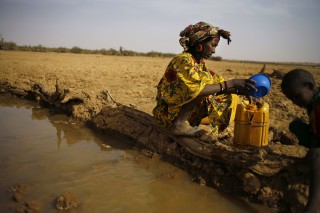Recently, Caroline Kende-Robb an Executive Director for the Progress Panel wrote “The SDGs Will Only Succeed If They Can Succeed in Africa”. The article underscores the reality that Africa is and will remain a viable investment destination, and secondly that “poor economics” has reached the final opportunity to be addressed – in other words, the poor possess very little yet it is assumed that we have nothing interesting to learn from them. We also forget that the poor exist for a number of reasons, some of which are due to unfavourable policy, greed or the poor application of economics. Therefore, we have undermined the fight against poverty.
While some perceive the Sustainable Development Goals (SDGs) as an act of kicking the bucket further down the road- given the persistent nature of the challenges, when they are perceived as opportunities, Africa remains the home-front to repay in sound investment, business development and governance. SDG7 seeks to ensure access to affordable, reliable, sustainable and modern energy for all. But how will this fare in Africa?
Africa holds 90 percent of the world’s platinum, over 90 percent of Africa’s coal, Africa has over 50 percent of the world’s gold, 60 percent of the world’s arable and uncultivated land and unsurmountable access to green energy- yet more than 621 million Africans have no access to electricity despite Africa’s wealth.
‘Africa in Numbers’ underscores that numbers always tell the truth and in development, we need to pay close attention to variations and changes taking place across the continent. The set of numbers for the poor differ to the set of numbers for the richer, participative members of our continental economic mainstream. With this in mind, we present to you an insight into Africa’s opportunities.
The Critical Facts
- Half of Sub-Saharan Africa’s power generation is located in South Africa
- The democratic government of South Africa inherited this energy capacity
- Electricity Consumption in Spain exceeds consumption in the whole of SSA, except South Africa
- SSA has 12% of global population, yet generates only 1.8% of global electricity
- Approximately 2/3 of Africa’s population (621 million) have no access to electricity
- At the current pace, it will take Africa until 2080 to reach global universal access
- Four in Five Africans (727 million) rely mainly on fuel wood and charcoal to cook
- Africa’s energy deficit has a cost = US$38 billion (3% of GDP, 2010)
- SSA’s investment gap is estimated at US$55 billion per year until 2030
Climate
- Africa contributes only 2.3% to C02 emissions, yet is most vulnerable to climate change
- A 4 degree increase in temperature makes cropping sorghum, millet and maize unviable
- In ten years Africa lost 2 million hectares of forest
- Under warming of 10% can reduce crop production of 10 percent by 2050
- Precipitation could cut groundwater availability by 50%-70%
- Fossil fuel subsidies equate to US$2 trillion – fives times higher than renewables
- Rwanda presents a viable model – since 2008 – 2017 will produce 50% of energy from renewables
- Current global savings are estimated at US$90 trillion
So here’s the question: Can Africa afford its own SDG 7?












